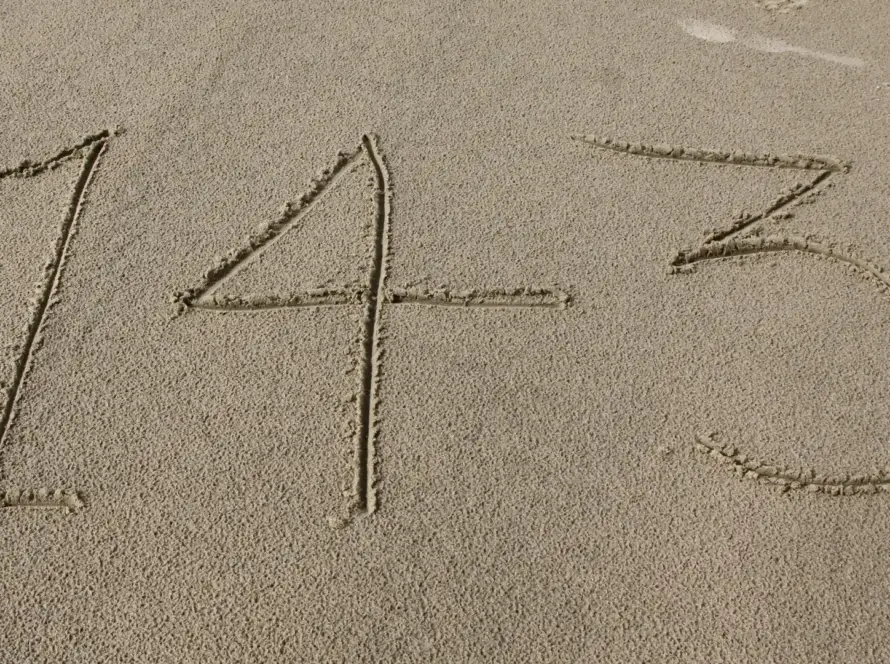
Cuffing season refers to the period during the fall and winter months when people, particularly singles, seek out romantic relationships or “cuff” themselves to a partner.
It is a cultural phenomenon that gained popularity in recent years, primarily in regions with colder climates. The term “cuffing” is derived from the idea of figuratively handcuffing oneself to another person. Usually for companionship and intimacy during the colder months.
During this period, individuals may actively pursue relationships. Or seek out casual partners to spend time with during the holiday season and colder weather.
The desire for emotional and physical warmth, coupled with the societal pressure of being in a relationship during festivities, can contribute to the popularity of cuffing season.
While the exact duration of this season may vary, it typically starts around late autumn and lasts through the winter months.
It’s important to note that not everyone participates in cuffing season, and it’s entirely optional.
Some individuals may prefer to remain single or prioritize other aspects of their lives.
Cuffing season is more of a cultural trend or observation rather than a mandatory or universally experienced phenomenon.
And some might engage in it even without realizing that this is actually a trend!
When does cuffing season typically occur?
Cuffing season typically occurs during the fall and winter months, starting around late autumn and extending through the winter season.
The exact timing can vary depending on factors such as regional climate, cultural norms, and individual preferences.
In general, it coincides with the transition from warmer to colder weather when people tend to seek companionship and intimacy to combat the chill and loneliness that can come with the season.
Cuffing season often aligns with holidays such as Thanksgiving, Christmas, and New Year’s Eve. Which can amplify the desire for a romantic partner during festive celebrations.
The period leading up to Valentine’s Day in mid-February may also be considered part of cuffing season for some individuals.
It’s important to remember that cuffing season is not a fixed timeframe and can vary from person to person.
Some individuals may start seeking relationships earlier in the fall, while others may participate for a shorter duration or not at all.
The specific timing and duration of cuffing season depend on personal preferences and external factors.
Also, there might be people who are seeking relationships for the summer… like a summer variant of the cuffing season. And they might only want to be in a relationship to have someone to go with on a holiday and have amazing adventures… again only for the duration of the summer.
Why is it called cuffing season?
The term “cuffing season” is derived from the idea of “cuffing,” which metaphorically refers to the act of figuratively handcuffing oneself to another person.
The term emphasizes the desire for a temporary or seasonal relationship during the fall and winter months.
The concept of such a season suggests that individuals seek companionship and intimacy during this time of year when the weather is colder and the desire for emotional and physical warmth is heightened.
The term “cuffing” plays on the notion of being “tied down” or “attached” to someone, similar to how handcuffs restrict movement.
The term gained popularity in popular culture and is often used to describe the phenomenon of people actively seeking out relationships or casual partners during the colder months.
It has become a way to capture the idea of individuals wanting to be “cuffed” or connected with someone romantically during a specific time of the year.
So basically handcuffed to someone else… even if just for a limited period of time.
What are the signs that someone is participating in cuffing season?
While it’s not always possible to definitively determine if someone is participating in cuffing season, there are a few signs that might suggest their involvement.
Here are some potential indicators:
- Increased social activity: People participating in cuffing season often become more socially active, attending more gatherings, events, or parties in an effort to meet potential partners.
- Heightened interest in dating: Those engaging in taking part to this season might display a greater interest in dating or actively seek out new romantic connections during the fall and winter months. More than usual that is.
- Desire for companionship: Individuals involved in cuffing season may express a stronger desire for companionship and intimacy, particularly during the holiday season or colder weather, when the need for emotional and physical warmth is more pronounced.
- Focus on indoor activities: Cuffing season participants may prioritize indoor activities over outdoor ones, seeking cozy and intimate settings to spend time with their potential partners.
- Seeking long-term connections: While cuffing season is often associated with casual or temporary relationships, some individuals may be looking for more long-term connections during this period. They might be interested in establishing a deeper bond rather than just a seasonal fling.
- Active dating app usage: People participating in cuffing season may increase their activity on dating apps or online dating platforms to explore potential matches and increase their chances of finding a partner.
- Engaging in holiday traditions: Individuals involved in cuffing season might show a greater interest in participating in holiday traditions and events with a romantic partner, such as attending holiday parties, gift exchanges, or even introducing their partner to their family or friends.
It’s important to note that these signs are not definitive proof of someone participating in cuffing season, as everyone’s preferences and behaviors can vary.
Communication and understanding individual intentions are crucial when navigating relationships, regardless of the time of year.

How long does cuffing season usually last?
The duration of cuffing season can vary depending on individual preferences and circumstances.
Generally, cuffing season begins in the late fall, around late October or November, and extends through the winter months.
It typically concludes in the early spring, around February or March. This timeframe aligns with the desire for companionship and intimacy during colder weather and coincides with holidays like Thanksgiving, Christmas, New Year’s Eve, and Valentine’s Day.
However, it’s important to note that cuffing season does not have a set duration.
Some individuals may participate for a shorter period, while others may extend their search for a partner beyond the typical timeframe. Some relationships that form during cuffing season may even continue beyond the winter months and transition into more long-term commitments.
Ultimately, the length of cuffing season is influenced by personal preferences, individual circumstances, and the evolving nature of relationships. It’s a fluid concept that can vary from person to person.
What are the benefits of participating in cuffing season?
Although it might sound weird, participating in cuffing season can offer several potential benefits, depending on individual circumstances and preferences.
Here are some commonly cited advantages:
Companionship: Cuffing season provides an opportunity to form a romantic connection and enjoy the companionship of another person during a time when feelings of loneliness or isolation may be more pronounced, such as during the holiday season.
Emotional support: Having a partner during cuffing season can provide emotional support and a sense of security. Sharing experiences, intimate moments, and personal conversations can foster emotional well-being and a sense of connection.
Seasonal activities: Cuffing season often involves engaging in seasonal activities together, such as cozying up by the fireplace, going on winter walks, or enjoying holiday festivities. Having a partner can enhance the enjoyment of these activities and create lasting memories.
Social engagements: During cuffing season, there tends to be an increase in social gatherings and events. Having a partner can make attending these gatherings more enjoyable and provide a sense of belonging and support in social settings.
Intimacy and physical warmth: Cuffing season coincides with colder weather, which can increase the desire for physical warmth and intimacy. Having a partner can fulfill these needs and provide a source of physical comfort during the chilly months.
Exploring a new connection: Cuffing season can be a time to explore new relationships and connections without the pressure of long-term commitment. It allows individuals to get to know someone on a deeper level, experience the joy of a new romance, and potentially build a strong foundation for a more lasting relationship.
It’s important to remember that the benefits of cuffing season can vary depending on individual preferences and the dynamics of the relationship.
Not everyone may find participating in cuffing season appealing. And it’s essential to make choices that align with one’s own desires and values.
Meaning, if you’re engaging in the cuffing season and are looking for someone to ‘cuff’ yourself to for a few months… you might want to be open and honest with them about it. Let them know what’s going on from the beginning and not drag them along if they’re looking for a more stable and committed relationship.
What are the potential drawbacks of this type of season?
While cuffing season can have its benefits, there are also potential drawbacks to consider.
Here are some common challenges associated with participating in cuffing season:
Temporary nature: Cuffing season is often characterized by a temporary or seasonal mindset, where relationships may be perceived as more casual and short-term.
This can create uncertainty and emotional ambiguity, as the expectations and commitment levels between partners may not align.
Pressure to find a partner: The cultural emphasis on cuffing season can create a sense of pressure to find a romantic partner during this time.
This pressure may lead individuals to enter relationships hastily or settle for less compatible matches, rather than prioritizing genuine compatibility and shared values.
Lack of authenticity: The desire to participate in cuffing season and find a partner for the season may lead some individuals to present themselves in ways that do not fully reflect their true selves.
This can result in relationships based on superficial qualities or false representations, which can be unsatisfying in the long run.
Emotional vulnerability: Developing emotional connections during cuffing season can make individuals more susceptible to emotional vulnerability.
When the season ends or the relationship doesn’t progress as desired, it can lead to disappointment, heartache, or feelings of rejection.
Limited personal growth: Focusing solely on finding a partner during cuffing season may divert attention and energy away from personal growth and self-discovery.
It’s essential to ensure that the desire for a temporary relationship does not overshadow personal development and individual goals.
Reduced independence: Cuffing season may involve a greater emphasis on couple-centric activities and spending time with a partner.
This can potentially limit individual freedom and independence. As well as the ability to explore personal interests or maintain a strong sense of self outside of the relationship.
Post-season transition: Once cuffing season comes to an end, there can be challenges associated with transitioning out of the temporary relationships that were formed. Navigating the change in dynamics or dealing with the potential break-up can be emotionally challenging for some individuals.
It’s important to approach cuffing season with awareness, open communication, and a clear understanding of personal desires and boundaries. Being mindful of the potential drawbacks can help individuals make informed decisions and prioritize their emotional well-being.
How can I prepare for cuffing season?
If you want to take part in the cuffing season you should get ready and prepare yourself.
Preparing for cuffing season involves taking proactive steps to increase your chances of finding a compatible partner and navigating the season successfully.
Here are some suggestions to help you prepare:
- Reflect on your intentions: Before entering cuffing season, take some time to reflect on your own desires and intentions. Understand what you are seeking in a partner and what you are willing to invest emotionally. Clarify whether you are looking for a casual connection or open to something more long-term.
- Know yourself: Understanding your own values, interests, and boundaries is crucial. Identify your non-negotiables and what you are willing to compromise on in a relationship. Knowing yourself well will help you make better choices and find a partner who aligns with your values and interests.
- Self-improvement: Focus on personal growth and self-improvement. Enhance your confidence, develop new skills, pursue hobbies, and engage in activities that bring you joy. Building a fulfilling life independently can make you more attractive and confident when seeking a partner.
- Socialize and expand your network: Increase your social activities and expand your network. Attend social events, join clubs or groups related to your interests, or participate in community activities. The more people you meet, the greater the chances of finding someone compatible.
- Online dating platforms: Consider using online dating platforms to expand your reach and meet potential partners. Create an appealing and honest profile that highlights your interests and what you are seeking in a relationship. Be proactive in initiating conversations and arranging meetups.
- Stay open-minded: Be open to meeting different types of people and be willing to step outside of your comfort zone. Don’t limit yourself to preconceived notions of an ideal partner. Give people a chance and focus on genuine connections rather than superficial attributes.
- Communicate your expectations: When entering into a potential cuffing season relationship, communicate your expectations and intentions clearly. Be open and honest about what you are seeking and listen to your partner’s desires as well. Establishing open communication from the beginning can help avoid misunderstandings.
- Prioritize self-care: Taking care of your physical and emotional well-being is crucial during cuffing season. Engage in self-care activities, manage stress, and maintain a healthy lifestyle. Taking care of yourself will contribute to your overall happiness and make you more prepared to navigate relationships.
Remember that cuffing season is optional, and it’s important to participate only if it aligns with your desires and values.
Be authentic, true to yourself, and prioritize your emotional well-being throughout the process.

How do I find a cuffing partner?
Finding a cuffing partner involves actively seeking out potential romantic connections during the cuffing season.
Here are some steps you can take to increase your chances of finding a cuffing partner:
Expand your social circle: Increase your social interactions and expand your network. Attend social events, parties, and gatherings where you can meet new people. Engage in conversations and be open to making new connections.
Utilize dating apps and websites: Online dating platforms can be a valuable tool for finding potential cuffing partners. Create an appealing and honest profile that showcases your interests and what you are looking for in a relationship. Take the initiative to reach out to people you find interesting and engage in meaningful conversations.
Join social or hobby-based groups: Join clubs, organizations, or hobby-based groups that align with your interests. Engaging in activities you enjoy can introduce you to like-minded individuals and increase your chances of finding someone with similar preferences.
Attend social events: Attend parties, holiday events, or gatherings during the cuffing season. These occasions provide opportunities to meet new people who are also looking for romantic connections. Be open, approachable, and initiate conversations with potential partners.
Ask friends for introductions: Inform your friends and acquaintances that you are looking for a cuffing partner. They may know someone who could be a potential match. And can facilitate introductions or set up group activities where you can meet new people.
Be proactive and initiate conversations: Take the initiative to start conversations with people who catch your interest. Express genuine curiosity, listen actively, and show interest in getting to know them better. Taking an active role in initiating connections can increase your chances of finding a cuffing partner.
Be open and flexible: Keep an open mind and be willing to explore connections with people who may not fit your initial criteria perfectly. Give individuals a chance and focus on genuine compatibility rather than solely relying on superficial attributes.
Communicate your intentions: When you find someone you are interested in, communicate your intentions clearly and honestly. Let them know that you are interested in participating in cuffing season and see if they share similar desires. Clear and open communication from the beginning can help establish mutual understanding.
Remember that finding a cuffing partner is a process, and it may require some patience and perseverance.
Focus on building genuine connections and take the time to get to know potential partners before committing to a cuffing relationship.
And who knows… maybe you’ll actually meet someone that you’ll want to be in a relationship with beyond the cuffing season…
What should I do if I don’t want to participate in this season?
If you don’t want to participate in this specific season, it’s completely okay and valid to prioritize your own preferences and desires.
Here are some suggestions on what you can do:
Be clear about your intentions: Communicate your intentions honestly and openly with potential partners or those expressing interest in cuffing season.
Let them know that you are not interested in participating in a temporary or seasonal relationship.
Setting clear boundaries from the beginning can help avoid misunderstandings.
Focus on personal growth: Use the cuffing season as an opportunity to focus on personal growth and self-improvement.
Engage in activities that bring you joy, pursue your interests, and invest time in your own well-being.
Use this time to explore your passions, strengthen friendships, and develop yourself as an individual.
Cultivate meaningful connections: Instead of seeking temporary relationships, focus on building deeper and more meaningful connections with others.
Prioritize friendships, platonic relationships, and connections that enrich your life beyond the romantic realm.
Invest in relationships that align with your long-term goals and values.
Explore new experiences: Use the cuffing season as a chance to explore new experiences and enjoy the freedom of being single.
Travel, try new hobbies, engage in self-discovery, and embrace the opportunities that come your way.
Emphasize self-exploration and personal fulfillment during this time.
Practice self-care: Focus on self-care and prioritize your physical and emotional well-being.
Engage in activities that promote self-care, manage stress, and maintain a healthy lifestyle.
Prioritize self-love and self-compassion, and take time to nurture yourself.
Set boundaries: Be assertive in setting boundaries regarding your time, energy, and emotional availability.
Avoid feeling pressured by societal expectations or external influences to participate in cuffing season. Stay true to your own desires and values.
Surround yourself with support: Seek support from friends, family. Or even a support network who understands and respect your decision not to participate in cuffing season.
Surrounding yourself with individuals who value and support your choices can provide emotional encouragement and reinforcement.
Remember, it’s important to honor your own feelings and desires when it comes to relationships.
Everyone’s preferences are different. And it’s perfectly fine to opt out of cuffing season if it doesn’t align with what you’re seeking.
Focus on what brings you happiness and fulfillment, and create a path that aligns with your personal goals and values.
Now whether you want to engage or not in cuffing season it is entirely up to you. But at least you have some more knowledge about it and some direction which way to go, whichever way you decide.
Just keep in mind that there are some people who are engaging in cuffing season. Even without realizing what they’re doing. But now you can spot them as you know what the signs are.
Happy dating!!!










